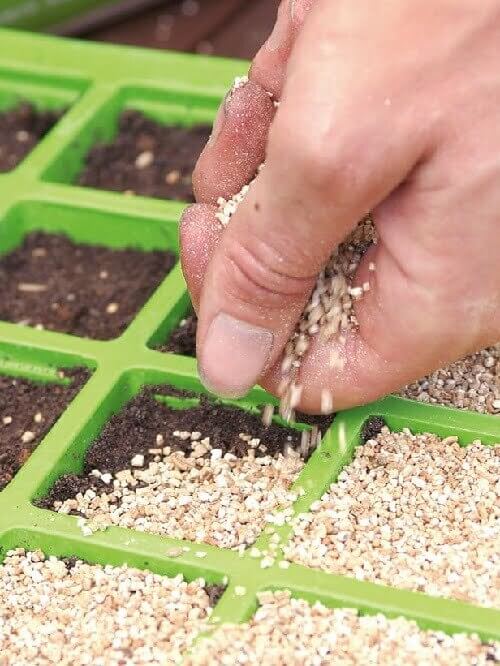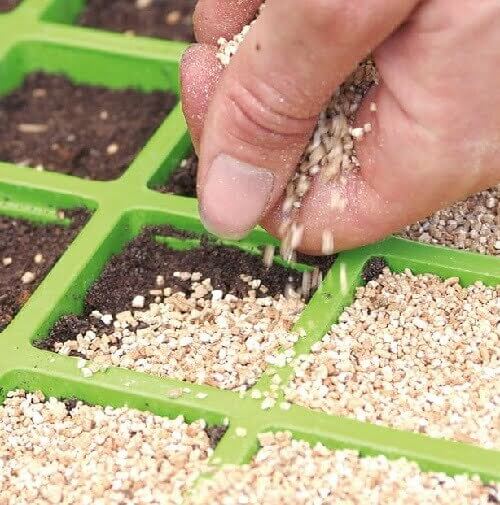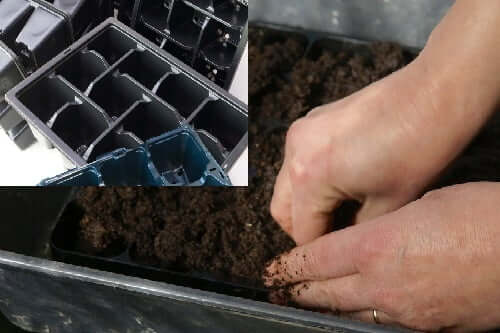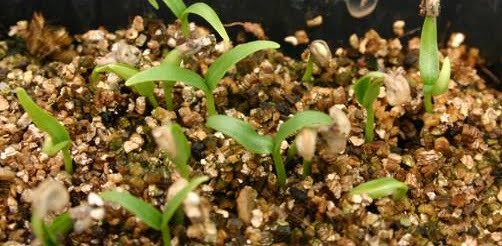Seedling trays of the type sold by most garden centres are ideal. Fill the clean trays to the rim with sowing mix and level it. Generally, seeds should not be sown deeper than two to three times their diameter. The distance between the furrows, known as ‘drills’, should be about 50mm for small seeds and 75mm for larger ones. Spread the seed as evenly as possible, using a vibrating wrist action, then cover them with a thin layer of sieved river sand or vermiculite, never thicker than the diameter of the seed itself. Very fine seeds need no soil covering at all.  Water the newly planted seeds, adding a fungicide like Virikop or Fungi-Nil to prevent damping-off disease, which causes seedlings to wilt and die. Label the tray with the name of the variety and the date. Water the newly planted seeds, adding a fungicide like Virikop or Fungi-Nil to prevent damping-off disease, which causes seedlings to wilt and die. Label the tray with the name of the variety and the date.Most seeds germinate in two to four weeks. Don’t overwater seeds and keep them in a light, warm position, out of direct sunlight. A good way to water seed trays is to place them in a shallow pan of water. Fine seeds that have not been covered with soil need high humidity to germinate. This is easily provided by sliding a pane of clear glass over the tray or by covering the tray with clear plastic. Remove the glass or plastic as soon as germination commences to prevent fungal diseases from attacking the seedlings If you cover the tray, it is likely that you will not need to water it again until the seeds actually germinate. |






 Use a ruler to make shallow furrows in a grid pattern to the depth necessary for the seeds being used (check the sowing depth on the seed packet).
Use a ruler to make shallow furrows in a grid pattern to the depth necessary for the seeds being used (check the sowing depth on the seed packet).






























